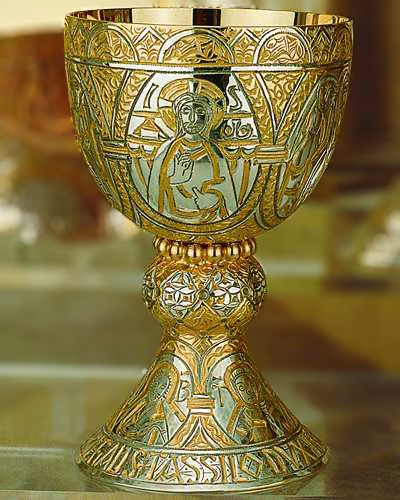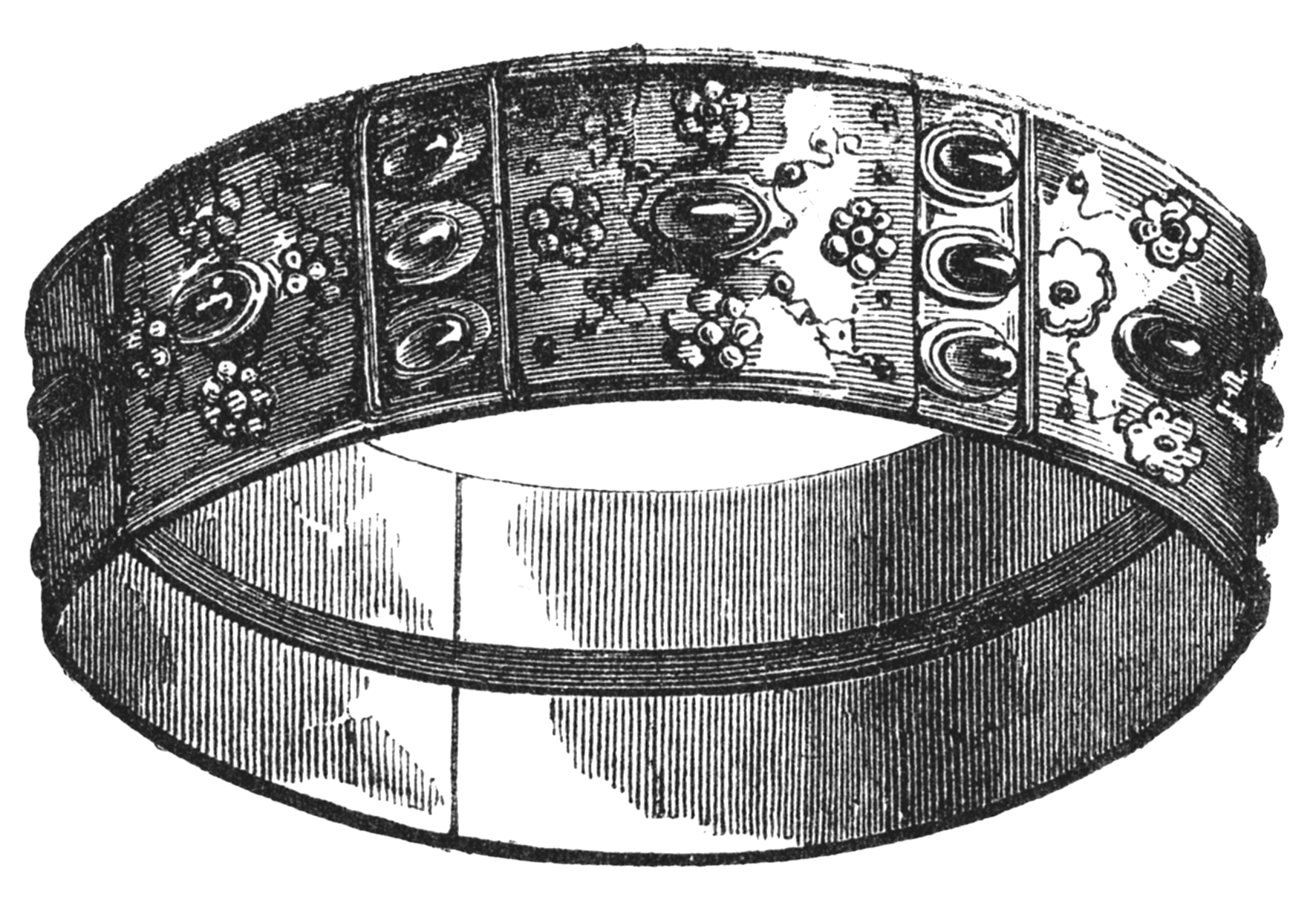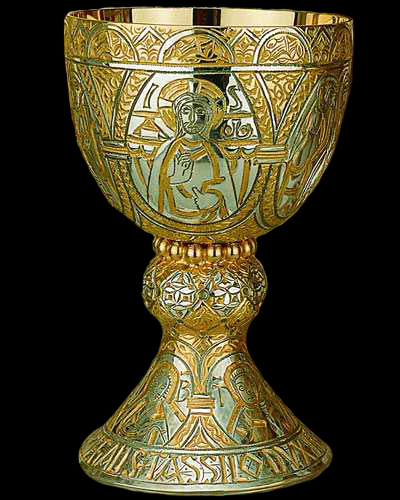|
Liutperga
Liutperga (Liutpirc) (fl 750 - fl. 793) was a Duchess of Bavaria by marriage to Tassilo III, the last Agilolfing Duke of Bavaria. She was the daughter of Desiderius, King of the Lombards, and Ansa. Duchess of Bavaria She was married to Tassilo at some point prior to 770, possibly in 763, to confirm the traditional alliance between Lombardy and Bavaria. The couple had four sons: Theodo, Cotani, Hrodrud and Theodebert. Political agency It has been argued that Liutperga resented the Frankish king Charlemagne. This argument is based on both the supposed repudiation of his marriage to Liutperga's sister Desiderata and his subsequent destruction of the Kingdom of Lombardy and imprisonment of her parents. Liutperga played an apparently major role in her husband's opposition to Charlemagne. Frankish annals references to Liutperga suggest this. The Annales Mettense Priores refer to her as Tassilo's "wicked wife" and the Revised Royal Frankish Annals refer to the Liutperga's "urging" ... [...More Info...] [...Related Items...] OR: [Wikipedia] [Google] [Baidu] |
List Of Bavarian Consorts
There have been three kinds of Bavarian consorts in history, Duchesses, Electresses and Queens. Most consorts listed are Duchesses. The first ever consort of Bavaria was Waldrada in the 6th century. The final consort was Maria Theresa of Austria-Este (1849–1919), Maria Theresia of Austria-Este in 1913. The longest serving House was the Wittelsbach Dynasty, who played a major role in Bavarian History. During the medieval period under the Wittelsbach Dynasty, Bavaria was split into two parts, Upper and Lower Bavaria. This meant that there may have been more than one Duchess of Bavaria at the same time, due to messy inheritance among heirs. Three of the break-away Wittelsbach families were: Landshut, Munich and Ingolstadt. Since 555 there have been 99 Bavarian consorts: 78 duchesses, 11 queens, 10 electresses and one margravine. The number doesn't add up because Elizabeth of Lorraine and Caroline of Baden, held two titles. There was a few consort that married twice usually their ... [...More Info...] [...Related Items...] OR: [Wikipedia] [Google] [Baidu] |
Ansa (queen)
Ansa or Ansia (died after 774) was a Queen of the Lombards by marriage to Desiderius (756–774), King of the Lombards. Life She belonged to an aristocratic family of Brescia. The Latin name does not imply a Romano-Italic origin, as Romans and Lombards in the eighth century tended to take either Lombard or Latin names. She was probably a Lombard, the daughter of Verissimo and sister of King Hildeprand, Arechis, and Donnolo, and niece of King Liutprand. In or around 753, she founded the monastery of St. Michele and St. Pietro at Brescia. Her husband meanwhile, had become a royal officer and the couple moved first to the royal court, and then to Tuscany, when Desiderius became ' Duke of Tuscia'. After the death of King Aistulf, Desiderius managed to take the throne and Ansa become queen, actively collaborating with her husband, especially in religious matters. In Brescia, she expanded the previously founded monastery, which became the Monastery of San Salvatore, endowed it w ... [...More Info...] [...Related Items...] OR: [Wikipedia] [Google] [Baidu] |
Desiderius
Desiderius, also known as Daufer or Dauferius (born – died ), was king of the Lombards in northern Italy, ruling from 756 to 774. The Frankish king of renown, Charlemagne, married Desiderius's daughter and subsequently conquered his realm. Desiderius is remembered for this connection to Charlemagne and for being the last Lombard ruler to exercise regional kingship. Rise to power Born in Brescia, Desiderius was originally a royal officer, the ''dux'' of Tuscia and he became king after the death of Aistulf in 756. At that time, Aistulf's predecessor, Ratchis, left his monastic retreat of Montecassino and tried to seize the kingdom, but Desiderius put his revolt down quickly with the support of Pope Stephen II. At his coronation, Desiderius promised to restore many lost papal towns to the Holy See and even enlarge the Papal State. By 757, Desiderius began securing his power, taking what historian Walter Goffart terms, "vigorous steps to suppress resistance to himself in the po ... [...More Info...] [...Related Items...] OR: [Wikipedia] [Google] [Baidu] |
Tassilo III, Duke Of Bavaria
Tassilo III ( 741 – c. 796) was the duke of Bavaria from 748 to 788, the last of the house of the Agilolfings. The Son of Duke Odilo of Bavaria and Hitrud, the Daughter of Charles Martell. Tassilo, then still a child, began his rule as a Frankish ward under the tutelage of his uncle, the Carolingian Mayor of the Palace Pepin the Short (later king) after Tassilo's father, Duke Odilo of Bavaria, had died in 748 and Pepin's half-brother Grifo had tried to seize the duchy for himself. Pepin removed Grifo and installed the young Tassilo as duke, but under Frankish overlordship in 749. Then, in 757, according to the ''Royal Frankish Annals'', Tassilo became Pepin's vassal and the lord for his lands at an assembly held at Compiegne. There, he is reported to have sworn numerous oaths to Pepin and, according to reports that may have been written much later, promised fealty to him and his sons, Charles and Carloman. However, the highly legalistic account is quite out of character for t ... [...More Info...] [...Related Items...] OR: [Wikipedia] [Google] [Baidu] |
Tassilo III Of Bavaria
Tassilo III ( 741 – c. 796) was the duke of Bavaria from 748 to 788, the last of the house of the Agilolfings. The Son of Duke Odilo of Bavaria and Hitrud, the Daughter of Charles Martell. Tassilo, then still a child, began his rule as a Frankish ward under the tutelage of his uncle, the Carolingian Mayor of the Palace Pepin the Short (later king) after Tassilo's father, Duke Odilo of Bavaria, had died in 748 and Pepin's half-brother Grifo had tried to seize the duchy for himself. Pepin removed Grifo and installed the young Tassilo as duke, but under Frankish overlordship in 749. Then, in 757, according to the ''Royal Frankish Annals'', Tassilo became Pepin's vassal and the lord for his lands at an assembly held at Compiegne. There, he is reported to have sworn numerous oaths to Pepin and, according to reports that may have been written much later, promised fealty to him and his sons, Charles and Carloman. However, the highly legalistic account is quite out of character for t ... [...More Info...] [...Related Items...] OR: [Wikipedia] [Google] [Baidu] |
Duke Of Bavaria
The following is a list of rulers during the history of Bavaria. Bavaria was ruled by several dukes and Monarch, kings, partitioned and reunited, under several dynasties. Since 1949, Bavaria has been a democratic States of Germany, state in the Federal Republic of Germany. Rulers of Bavaria Ducal Bavaria (also known as the "Old Stem duchy") Agilolfing dynasty Around 548 the kings of the Franks placed the border region of Bavaria under the administration of a duke—possibly Frankish or possibly chosen from amongst the local leading families—who was supposed to act as a regional governor for the Frankish king. The first duke we know of, and likely the first, was Gariwald, or Garibald I of Bavaria, Garibald I, a member of the powerful Agilolfing family. This was the beginning of a series of Agilolfing dukes that was to last until 788. Carolingian dynasty and dominion from the Holy Roman Empire The kings (later emperors) of the Franks now assumed complete control, placing B ... [...More Info...] [...Related Items...] OR: [Wikipedia] [Google] [Baidu] |
Charlemagne
Charlemagne ( , ) or Charles the Great ( la, Carolus Magnus; german: Karl der Große; 2 April 747 – 28 January 814), a member of the Carolingian dynasty, was King of the Franks from 768, King of the Lombards from 774, and the first Holy Roman Emperor, Emperor of the Romans from 800. Charlemagne succeeded in uniting the majority of Western Europe, western and central Europe and was the first recognized emperor to rule from western Europe after the fall of the Western Roman Empire around three centuries earlier. The expanded Frankish state that Charlemagne founded was the Carolingian Empire. He was Canonization, canonized by Antipope Paschal III—an act later treated as invalid—and he is now regarded by some as Beatification, beatified (which is a step on the path to sainthood) in the Catholic Church. Charlemagne was the eldest son of Pepin the Short and Bertrada of Laon. He was born before their Marriage in the Catholic Church, canonical marriage. He became king of the ... [...More Info...] [...Related Items...] OR: [Wikipedia] [Google] [Baidu] |
Hiltrud
Hiltrud (born c. 716 died 754), was a Duchess consort of Bavaria. Pierre Riché, Les Carolingiens, une famille qui fit l'Europe, Paris, Hachette, coll. « Pluriel », 1983 (réimpr. 1997), 490 p. ( She was regent of Bavaria for her minor son in 748-754. She was a daughter of Charles Martel and Rotrude of Treves. She married Odilo I of Bavaria Bavaria ( ; ), officially the Free State of Bavaria (german: Freistaat Bayern, link=no ), is a state in the south-east of Germany. With an area of , Bavaria is the largest German state by land area, comprising roughly a fifth of the total lan .... After his death in 748, she became regent for her son Tassilo. She died in 754, when the boy turned 13. References Medieval Lands Project on Chiltrudis, daughter of Charles Martel 754 deaths Women of medieval Germany 8th-century women rulers Year of birth unknown {{Germany-noble-stub ... [...More Info...] [...Related Items...] OR: [Wikipedia] [Google] [Baidu] |
Capitulary
A capitulary (Medieval Latin ) was a series of legislative or administrative acts emanating from the Frankish court of the Merovingian and Carolingian dynasties, especially that of Charlemagne, the first emperor of the Romans in the west since the collapse of the Western Roman Empire in the late 5th century. They were so called because they were formally divided into sections called (plural of , a diminutive of meaning "head(ing)": chapters). As soon as the capitulary was composed, it was sent to the various functionaries of the Frankish Empire, archbishops, bishops, missi dominici and counts, a copy being kept by the chancellor in the archives of the palace. The last emperor to draw up capitularies was Lambert, in 898. Preservation and study At the present day we do not possess a single capitulary in its original form; but very frequently copies of these isolated capitularies were included in various scattered manuscripts, among material of a very different nature, ecclesiasti ... [...More Info...] [...Related Items...] OR: [Wikipedia] [Google] [Baidu] |
Lombard Princesses
The term Lombard refers to people or things related to Lombardy, a region in northern Italy. History and culture * Lombards, a Germanic tribe * Lombards of Sicily, a linguistic minority living in Sicily, southern Italy * Lombard League, a medieval alliance of some 30 cities in Northern Italy Businesses * ICICI Lombard, an insurance company in India * Le Lombard (or Editions Lombard), a Belgian comic book publisher * Lombard Bank, a bank in Malta * Lombard Direct, an insurance company in the United Kingdom Places ;France * Lombard, Doubs, a commune of the Doubs ''département'' * Lombard, Jura, a commune of the Jura ''département'' ;United States * Lombard, Illinois * Lombard, Montana * Lombard, Wisconsin Other uses * Lombard (surname) * Lombard (gun), an early cannon * Lombard Street (other) * Automobiles Lombard, a French automobile manufacturer in the 1920s * Lombard Steam Log Hauler * Lombard language, a Romance language spoken in northern Italy (Lombardy), ... [...More Info...] [...Related Items...] OR: [Wikipedia] [Google] [Baidu] |
Year Of Death Unknown
A year or annus is the orbital period of a planetary body, for example, the Earth, moving in its orbit around the Sun. Due to the Earth's axial tilt, the course of a year sees the passing of the seasons, marked by change in weather, the hours of daylight, and, consequently, vegetation and soil fertility. In temperate and subpolar regions around the planet, four seasons are generally recognized: spring, summer, autumn and winter. In tropical and subtropical regions, several geographical sectors do not present defined seasons; but in the seasonal tropics, the annual wet and dry seasons are recognized and tracked. A calendar year is an approximation of the number of days of the Earth's orbital period, as counted in a given calendar. The Gregorian calendar, or modern calendar, presents its calendar year to be either a common year of 365 days or a leap year of 366 days, as do the Julian calendars. For the Gregorian calendar, the average length of the calendar year (the mea ... [...More Info...] [...Related Items...] OR: [Wikipedia] [Google] [Baidu] |
8th-century Italian Women
The 8th century is the period from 701 ( DCCI) through 800 ( DCCC) in accordance with the Julian Calendar. The coast of North Africa and the Iberian Peninsula quickly came under Islamic Arab domination. The westward expansion of the Umayyad Empire was famously halted at the siege of Constantinople by the Byzantine Empire and the Battle of Tours by the Franks. The tide of Arab conquest came to an end in the middle of the 8th century.Roberts, J., ''History of the World'', Penguin, 1994. In Europe, late in the century, the Vikings, seafaring peoples from Scandinavia, begin raiding the coasts of Europe and the Mediterranean, and go on to found several important kingdoms. In Asia, the Pala Empire is founded in Bengal. The Tang dynasty reaches its pinnacle under Chinese Emperor Xuanzong. The Nara period begins in Japan. Events * Estimated century in which the poem Beowulf is composed. * Classical Maya civilization begins to decline. * The Kombumerri burial grounds are founded. * ... [...More Info...] [...Related Items...] OR: [Wikipedia] [Google] [Baidu] |





